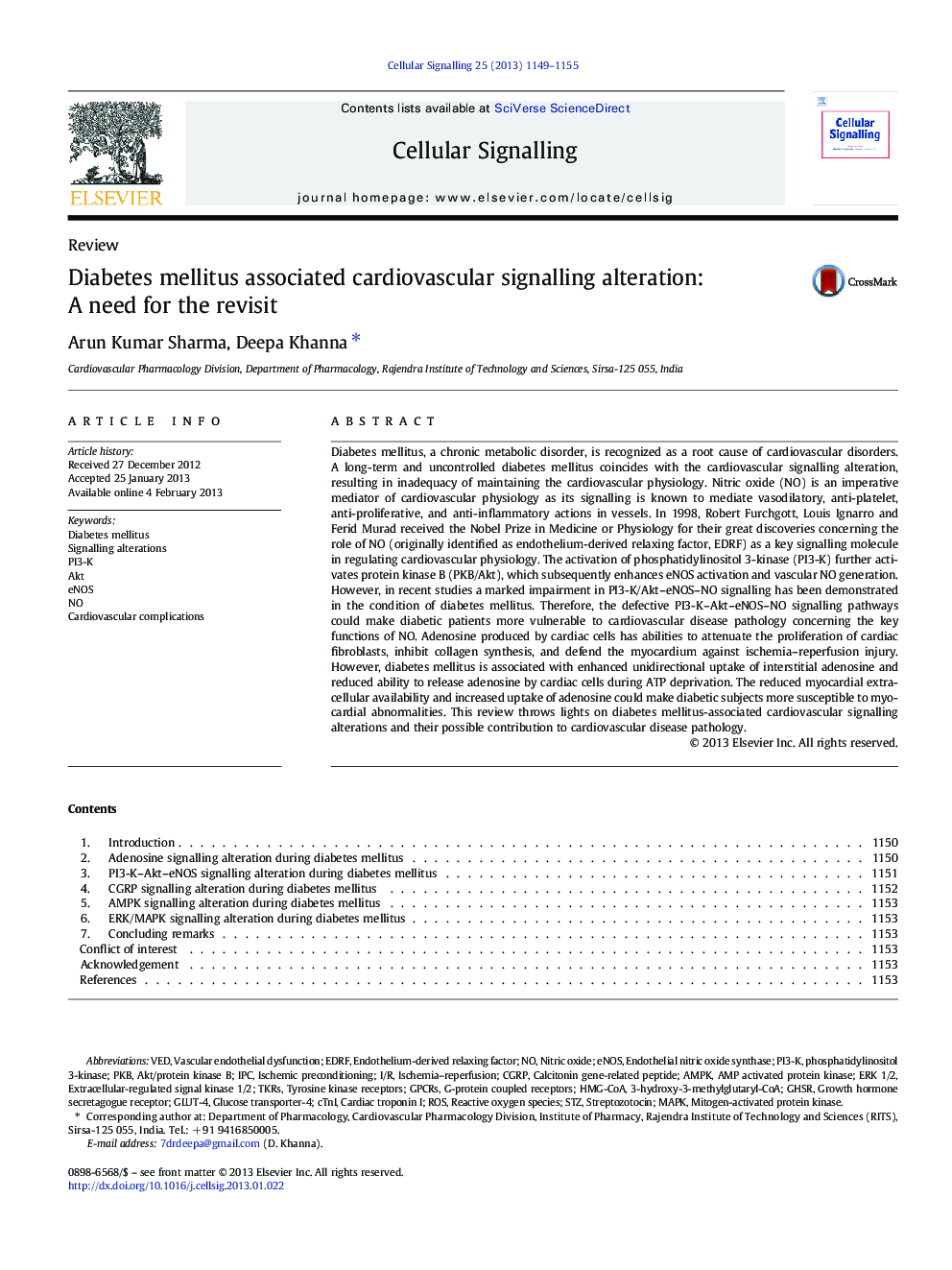| Article ID | Journal | Published Year | Pages | File Type |
|---|---|---|---|---|
| 1963476 | Cellular Signalling | 2013 | 7 Pages |
Diabetes mellitus, a chronic metabolic disorder, is recognized as a root cause of cardiovascular disorders. A long-term and uncontrolled diabetes mellitus coincides with the cardiovascular signalling alteration, resulting in inadequacy of maintaining the cardiovascular physiology. Nitric oxide (NO) is an imperative mediator of cardiovascular physiology as its signalling is known to mediate vasodilatory, anti-platelet, anti-proliferative, and anti-inflammatory actions in vessels. In 1998, Robert Furchgott, Louis Ignarro and Ferid Murad received the Nobel Prize in Medicine or Physiology for their great discoveries concerning the role of NO (originally identified as endothelium-derived relaxing factor, EDRF) as a key signalling molecule in regulating cardiovascular physiology. The activation of phosphatidylinositol 3-kinase (PI3-K) further activates protein kinase B (PKB/Akt), which subsequently enhances eNOS activation and vascular NO generation. However, in recent studies a marked impairment in PI3-K/Akt–eNOS–NO signalling has been demonstrated in the condition of diabetes mellitus. Therefore, the defective PI3-K–Akt–eNOS–NO signalling pathways could make diabetic patients more vulnerable to cardiovascular disease pathology concerning the key functions of NO. Adenosine produced by cardiac cells has abilities to attenuate the proliferation of cardiac fibroblasts, inhibit collagen synthesis, and defend the myocardium against ischemia–reperfusion injury. However, diabetes mellitus is associated with enhanced unidirectional uptake of interstitial adenosine and reduced ability to release adenosine by cardiac cells during ATP deprivation. The reduced myocardial extracellular availability and increased uptake of adenosine could make diabetic subjects more susceptible to myocardial abnormalities. This review throws lights on diabetes mellitus-associated cardiovascular signalling alterations and their possible contribution to cardiovascular disease pathology.
Graphical abstractFigure optionsDownload full-size imageDownload high-quality image (271 K)Download as PowerPoint slide
